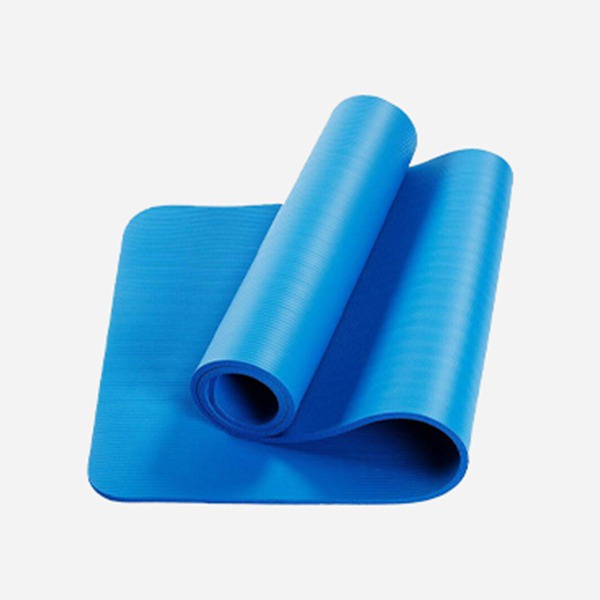Yoga has been gaining popularity all around the world, and rightfully so. The benefits of practicing yoga are numerous, including increased flexibility, strength, and relaxation. However, one of the most important aspects of practicing yoga is having the right equipment. In particular, choosing the right yoga mat is crucial. A yoga mat provides a stable and comfortable surface for your practice, and can even help prevent injuries. With so many options on the market, it can be overwhelming to choose the right one. In this article, we will discuss how to choose the right yoga mat.

Consider the Material
The material of a yoga mat can greatly impact the quality of your practice. Most commonly, yoga mats are made of PVC, rubber, or a natural material such as cork or jute. PVC mats are the most affordable option, but they may not be the most environmentally friendly. Rubber mats are a more sustainable option and provide excellent grip, but can be heavy and difficult to clean. Natural mats such as cork and jute are eco-friendly and provide a non-slip surface, but may be less durable than synthetic options. Consider your values, budget, and personal preferences when choosing a material.
Thickness and Size
Another important factor to consider is the thickness and size of the mat. Thicker mats provide more cushioning, making them a great choice for those with joint pain or sensitive knees.
However, thicker mats can also be heavy and cumbersome to carry. Thinner mats are lightweight and easy to transport, but may not provide enough cushioning for some people. The size of the mat is also important. Most standard yoga mats are 68 inches long and 24 inches wide, but taller individuals may need a longer mat.
Consider your body size and any specific needs when choosing the thickness and size of your mat.
Texture and Grip
The texture and grip of a yoga mat can greatly impact your practice. A mat with a textured surface can provide better traction, preventing slipping and sliding during your practice.
However, some people find that heavily textured mats can be uncomfortable or irritating to the skin. On the other hand, a mat with a smooth surface may be more comfortable, but may not provide as much grip.
Additionally, some mats come with a non-slip coating or additional grip pads, which can be a great option for those who need extra traction.
Durability and Maintenance
The durability and maintenance of a yoga mat are also important factors to consider. A high-quality mat should last for years, even with regular use. Mats made of synthetic materials such as PVC and rubber tend to be more durable than natural materials.
Additionally, consider the ease of maintenance. Some mats can be easily cleaned with a damp cloth, while others may require special cleaning products or machine washing.
Consider your lifestyle and preferences when choosing a mat that is easy to maintain.
Price
Finally, the price of a yoga mat is an important consideration. Yoga mats can range in price from less than $10 to over $100.
However, it is important to remember that a higher price does not always equal better quality.
Consider your budget and the features that are most important to you when choosing a mat. In general, high-quality mats made of natural materials tend to be more expensive, while synthetic mats are more affordable.
Consider Your Style of Yoga
Different styles of yoga require different features in a yoga mat.
For example, if you practice hot yoga or Bikram yoga, a mat with a moisture-wicking surface or towel-like texture may be necessary to prevent slipping. If you practice restorative or yin yoga, a thicker mat with more cushioning may be preferred.
Consider your style of yoga and any specific needs it may have when choosing a mat.
Environmental Impact
If sustainability is important to you, consider the environmental impact of the yoga mat you choose. Mats made from natural materials such as cork or jute are biodegradable and eco-friendly.
Additionally, some companies offer eco-friendly options made from recycled materials or using sustainable manufacturing practices.
Consider your values and impact on the environment when choosing a mat.
Brand and Reviews
Researching brands and reading reviews can be a helpful way to narrow down your options and choose a high-quality yoga mat. Look for well-known brands with a good reputation for producing high-quality mats.
Additionally, read reviews from other yogis to get an idea of the mat's durability, grip, and overall quality.
Try Before You Buy
If possible, try out different yoga mats before making a purchase. Many yoga studios and fitness centers have mats available for use, allowing you to test out different materials, textures, and thicknesses.
Trying out different mats can give you a better idea of what you like and dislike, and can help you make a more informed decision when purchasing your own mat.
Personal Style
Finally, don't forget to consider your personal style when choosing a yoga mat. Many mats come in a variety of colors, patterns, and designs, allowing you to express your individuality and add some personality to your practice. While style may not be the most important factor, having a mat that you love and feel comfortable on can enhance your overall practice experience.
Wrapping It Up
Overall, choosing the right yoga mat is a personal decision that depends on your individual needs and preferences.
By considering the material, thickness and size, texture and grip, durability and maintenance, price, style of yoga, environmental impact, brand and reviews, trying before you buy, and personal style, you can find a mat that suits your unique needs and enhances your yoga practice.


No comments yet